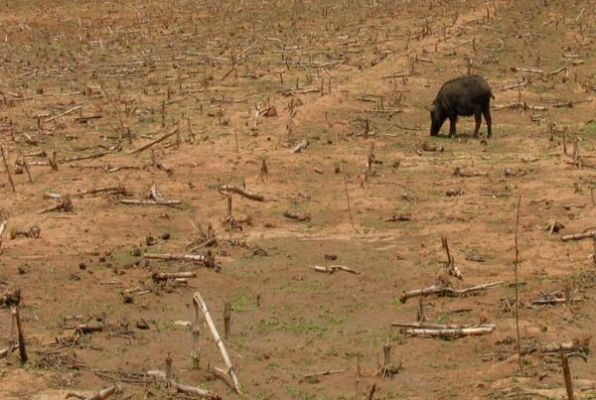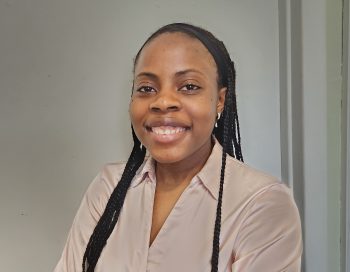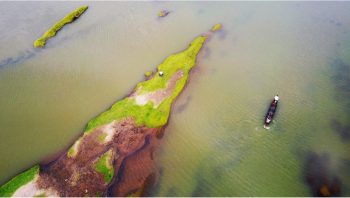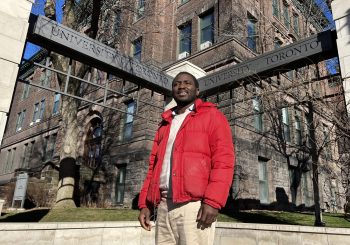This story originally appeared on U of T News for World Water Day, March 22, 2016.
It was July 2, 2008. The leaders of the G8 countries were about to gather in Scotland to discuss the state of the world economy. And a stellar cast of musicians was performing in a series of globally televised concerts called Live8 to bring attention to poverty – in particular poverty in Africa.
U of T Engineering professor emeritus Rod Tennyson (UTIAS) and his wife Daphne Lavers were among the millions who watched the concerts and wondered what they, as individuals, could do.
“I’m sitting there watching (Bob) Geldof and the others on Live8,” says the former director of the University of Toronto’s Institute for Aerospace Studies. “I know about fibre optic sensors. I know a fair amount about pipelines, even though I’m mostly interested in rockets and aircraft.
“I said to Daphne, ‘These guys are talking about Band-Aid solutions. There’s got to be a big solution. Why not think big?’ Daphne replied that if we can build oil pipelines that are thousands of kilometres long, why can’t we build a water pipeline?”
And so was born the Trans-Africa Pipeline project, a $14.7-billion proposal to build an 8,000-kilometre water pipeline across the Sahel region of Africa from the Atlantic on the west to the Red Sea on the east. The pipeline would feature desalination plants on each coast and a series of solar-powered pumping stations along the way. It would provide 800,000 cubic meters of water each day to the tens of millions of inhabitants of the region.
Since he had the initial idea, Tennyson has travelled extensively, consulting with academics, politicians, bureaucrats, fundraisers and other engineers in his efforts to bring the Trans-Africa Pipeline (TAP) to reality. Progress has been made. He has received support from the leaders of Mauritania on the Atlantic coast and Sudan on the east. His non-profit organization dedicated to the Trans-Africa Pipeline has partnered with the Pan-African Great Green Wall Agency, an 11-nation consortium that plans to plant trees across the Sahel to halt the continued desertification of that region.
Tennyson says the project is technically, economically and politically feasible. “This is not rocket science, as an aerospace engineer I should know,” he adds with a smile. “It’s a simple pipeline, combined with desalination plants and solar energy.”
Tennyson concedes that the projected cost of $14.7 billion is considerable. The cost of not building the pipeline, he contends – in human suffering, environmental degradation and lost potential – is much higher.
“Diseases from dirty water kill more people every year than all forms of violence, including war,” Tennyson says. “And Africa is losing 20,000 hectares of land to desertification annually. Two-thirds of arable land is expected to be lost in Africa by the year 2025 because of land degradation.”
Tennyson also argues that the construction and operational costs of the project would be offset by sale of the salt that would be a byproduct of the desalination plants.
Tennyson attributes his broad range of interests and skills to his engineering education at U of T, where he received his BASc, MASc and PhD degrees.
“I found no difficulty going from designing rockets and aircraft to designing new materials for spacecraft to designing fibre optic sensors for bridges and now water pipelines,” he says. “The U of T Engineering program gives you a tremendous breadth of knowledge and skills.”
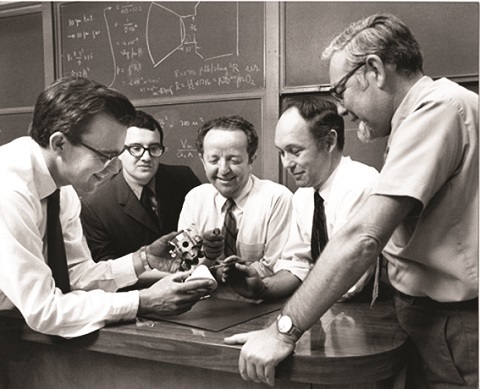
Today, the TAP project is Tennyson’s main concern, but he still has time to work with graduate students on research projects and to help plant trees for carbon sequestration in his Toronto neighbourhood.
UTIAS director David Zingg attributes Tennyson’s success with the Trans-African Pipeline to his passion, tenacity and vision. “Rod has made huge progress with this ambitious project, which has the potential to have an incredibly positive impact. He has done his homework thoroughly and has brought the project to the attention of many influential people in Africa. Hopefully it will become a reality.”
Tennyson says that day may come soon. TAP is in negotiations with a Chinese state agency to fund a proof-of-concept pilot project, which would involve one desalination plant, one solar power plant and about 700 kilometres of pipeline.
“Do the economics work?.” he asks. “Does it function technically as projected? Is the water sufficient for the people as well as for irrigation?
“When that’s done, we jump to Phase 2 and away we go!”
Learn more about the Trans Africa Pipeline.
